Category: Visual Arts
3
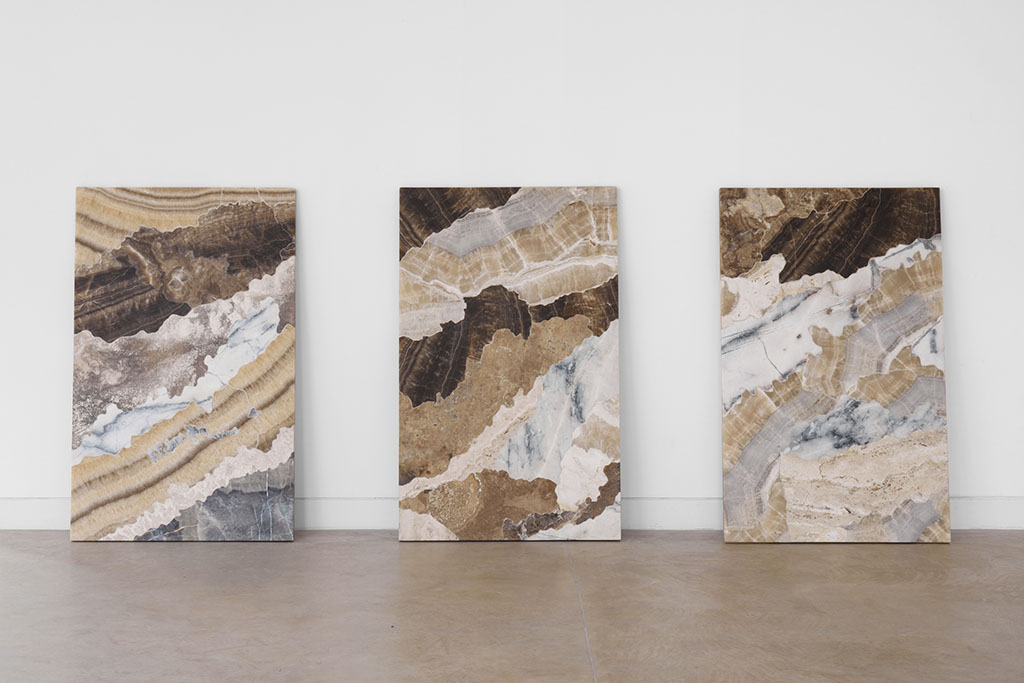
"Tres vistas aéreas de los Andes y Amazonía" es una pieza trabajada a mano por los artesanos del taller de Roberto Román en el distrito de Huaycán, al este de Lima. "Three aerial views of the Andes and Amazon" was handcrafted by artisans from Roberto Román's workshop located in Huaycán district, at the east of Lima.
The Material of the Landscape
The stones allude directly to our nearest landscape: the mountains that border the coast of Lima. They are witness of flowing water and the passage of time. They come down from the highlands through the river creaks until they reach the sea and become sand. It is in the water where the Andes, the Amazonia and the desert converge.
We dig up land and find the imprints of every time, like rings of trees. We find a geographic and geologic space formed by overlapping layers and skins, fossils and time sediments that recreate the diverse and fragmented, past and present, solid and liquid at the same time. It is space in continuous discontinuity.
The Material of the Landscape aims to reconstruct the continuity of our time and space, reconnecting identity and body, and the relation with our inner and outer self, finding again the origins of the wild materials and their continuous transformation.
CONCEPT AND DESIGN
RAFAEL FREYRE
CRAFT WORK AND PRODUCTION OF PIECES
ROBERTO ROMÁN MUNAILLA
PRODUCTION
SOL JACOBS
MARÍ RETAMOZO
YULIANA SANTA MARÍA
PHOTOGRAPHY
JUAN PABLO MURRUGARA
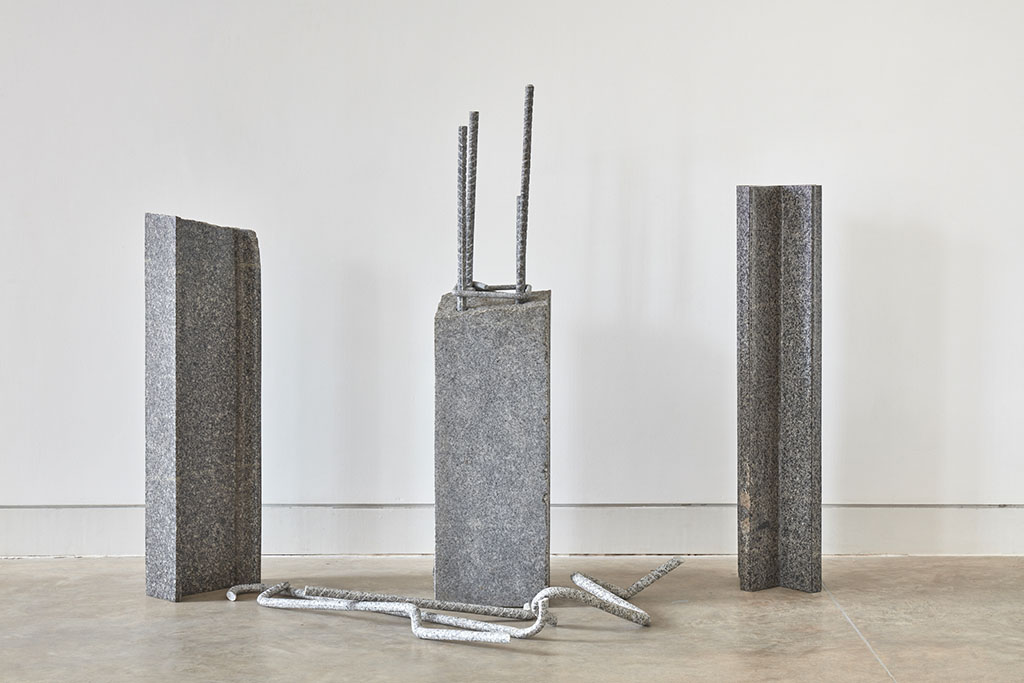
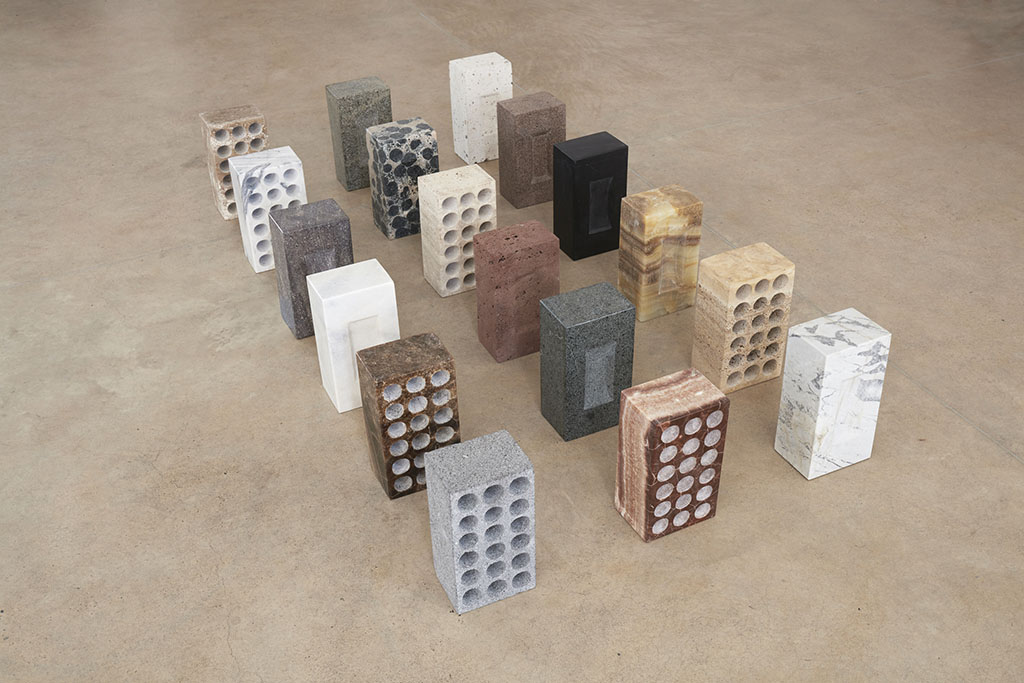
Ladrillos fabricados artesanalmente con distintas piedras del ande peruano. Bricks handcrafted with different stones from Peruvian Andes.
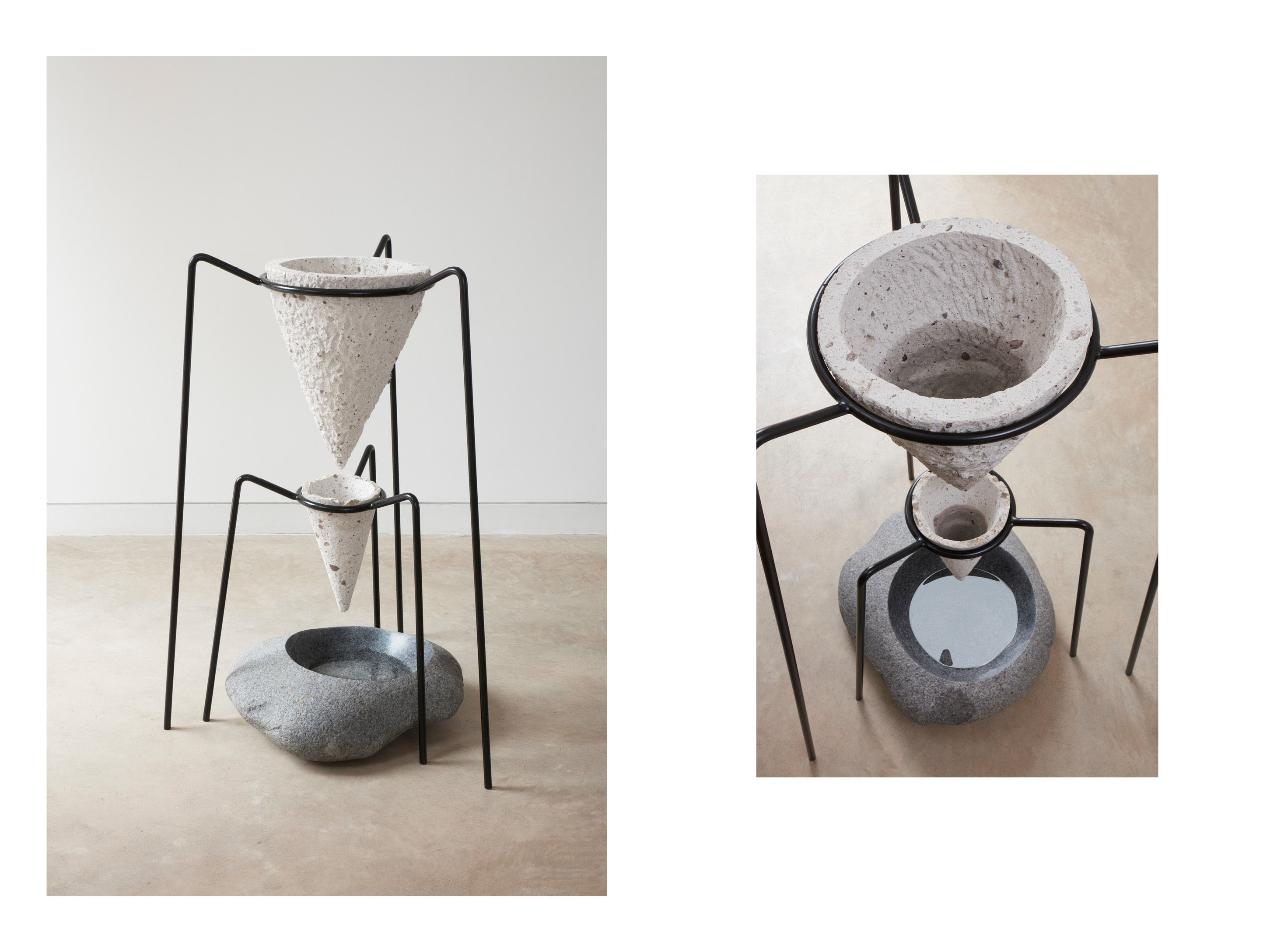
Filtro de agua fabricado artesanalmente con piedra volcánica. Handcrafted water filter with volcanic stone.
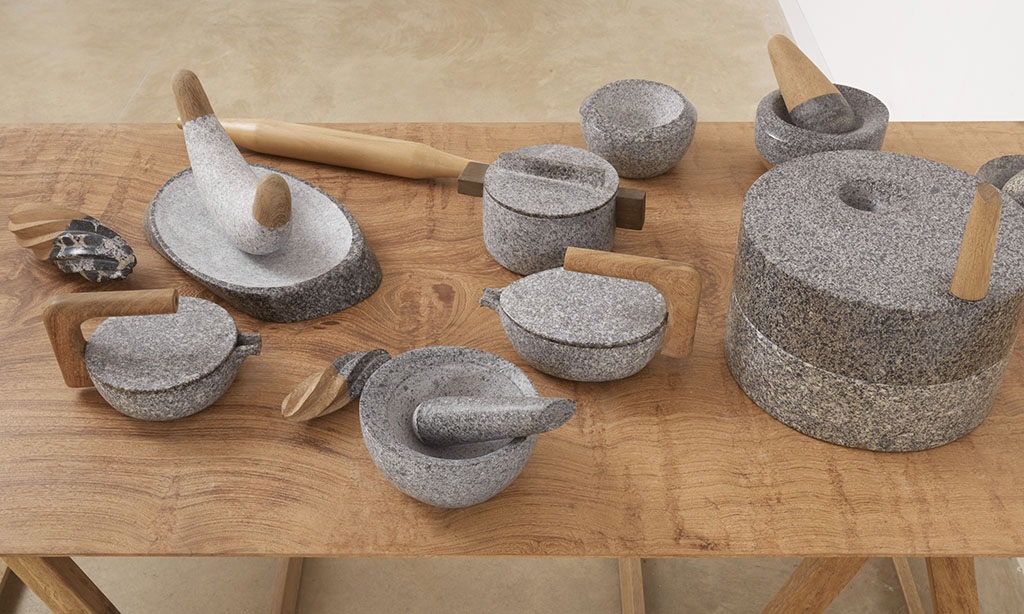
Utensilios para rituales diarios de granito y madera amazónica. Utensils for daily rituals handcrafted with granite and Amazonian wood.
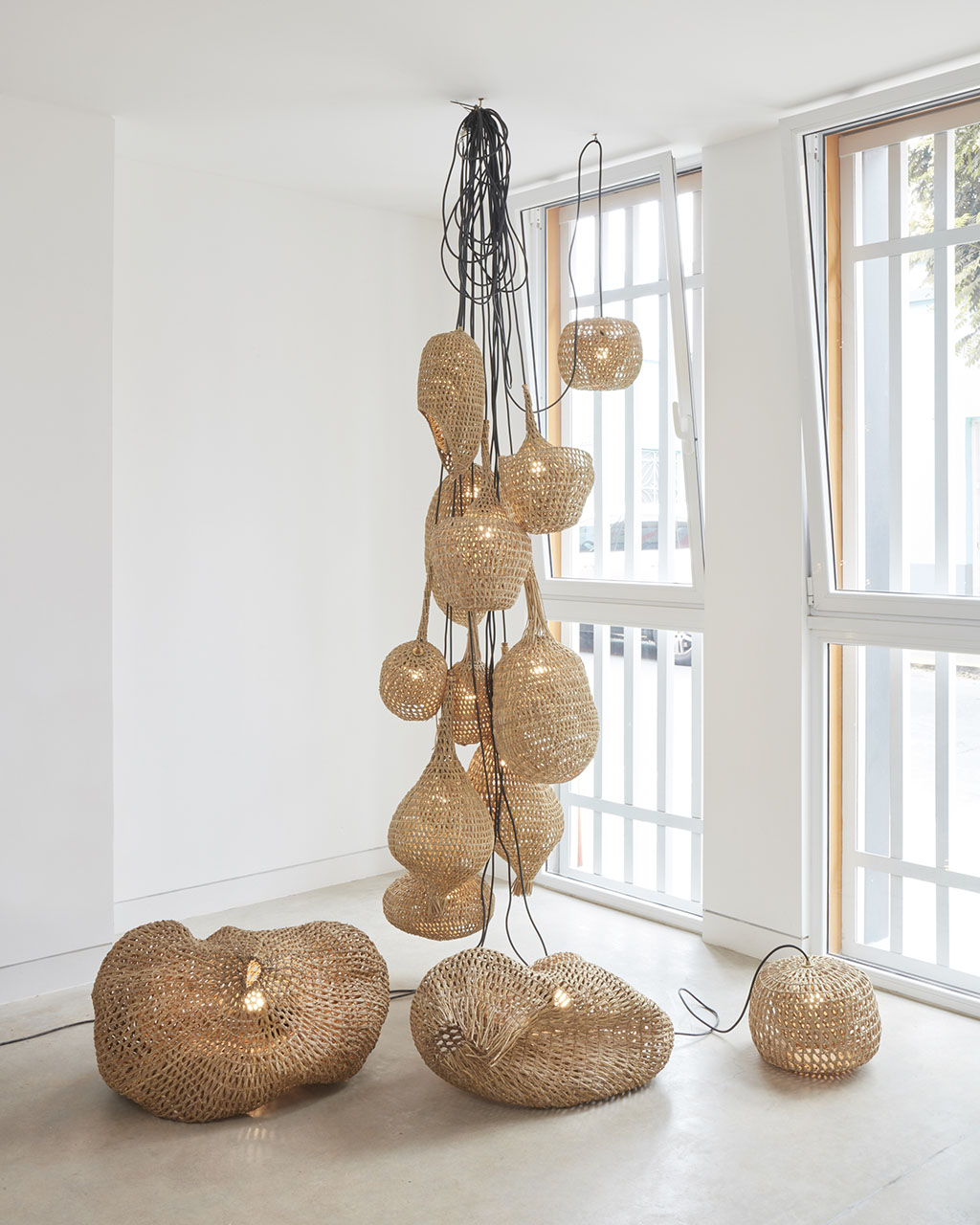
Humedales de la costa. Lámparas tejidas con junco. Coastal wetlands. Woven lamps with reed.
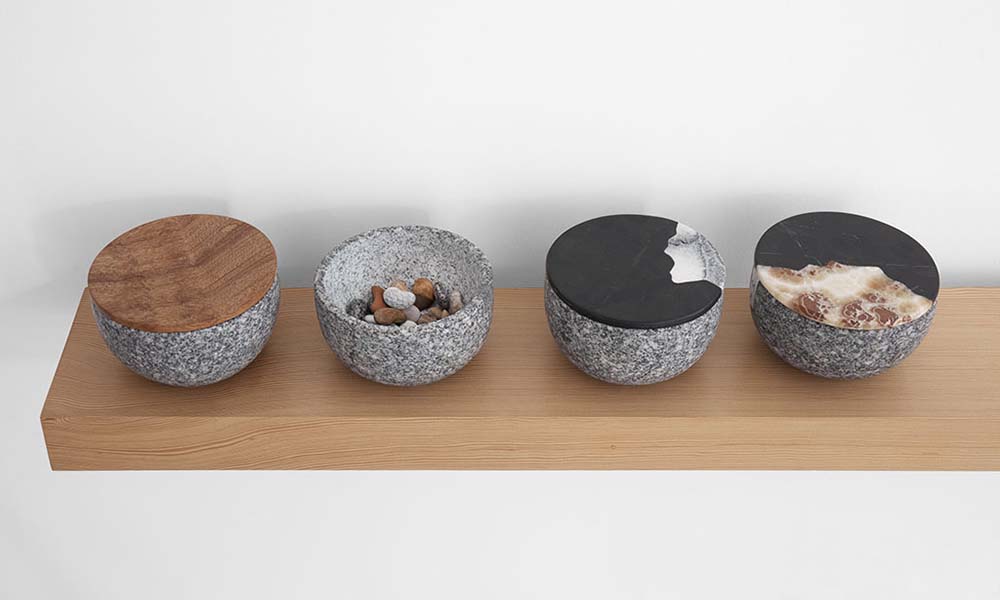
Germinadores. Utensilios de diversas piedras del Ande peruano. Germinators. Utensils made with different stones of peruvian Andes.
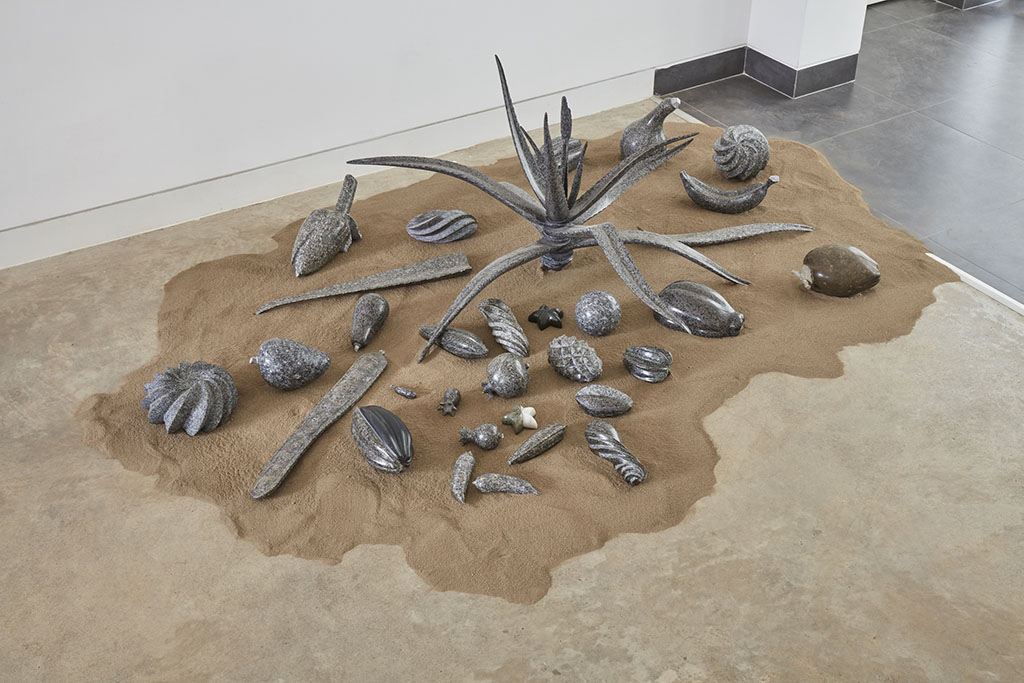
Plantas medicinales. Esculturas fabricadas artesanalmente con granito de Huaycán. Medicinal plants. Handmade sculptures made with granite from Huaycán.
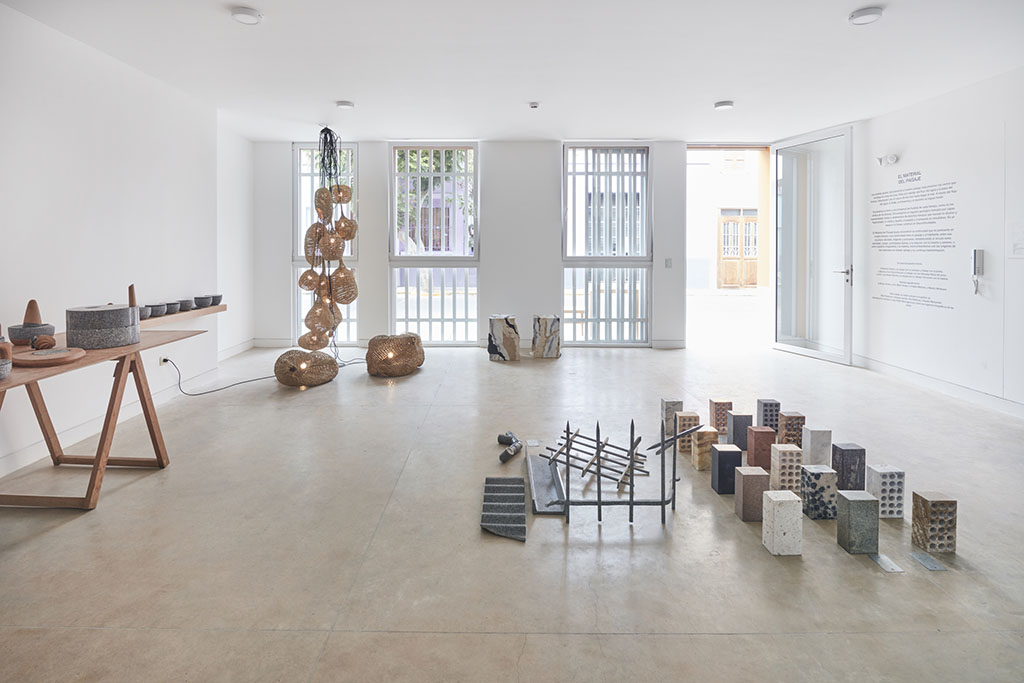
Muestra El Material del Paisaje
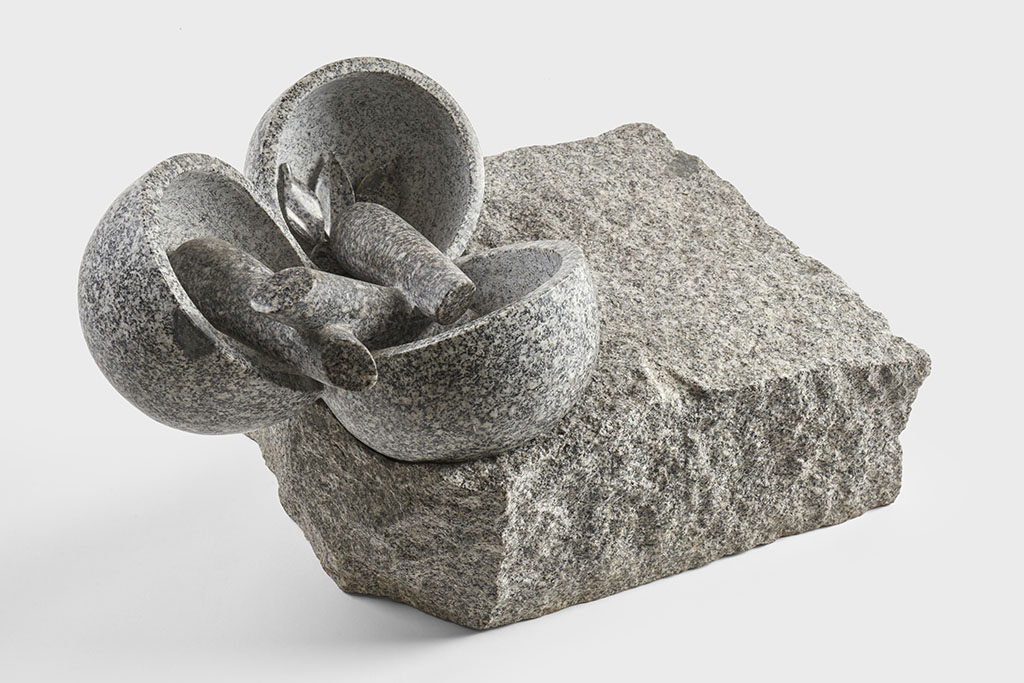
Escultura de piedra Tres Morteros Unidos
Three mortars united
Mortars are manual tools employed in various collective rituals of pre-Columbian societies. Their use varies from religious ceremonies to food and medicine preparation. Through them, we extract the essences that plants and minerals have created from their interaction with the sun, water and soil.
Nourishment, healing, and ritual are all contained within a single, three-concavity object. It is through the extraction of living substances, colored dyes, flavors, scents and remedies that our body – with a repetitive and rhythmic movement – relates to an ancient ritual.
“Tres morteros unidos” participó en la 19º edición del Concurso Anual de Esculturas IPAE donde recibió el premio ganador junto a la obra “Caracol Puercospín” de Eduardo Llanos Bustamante.
CONCEPT AND DESIGN
RAFAEL FREYRE
STONE WORK
ROBERTO ROMÁN
MATERIAL
GRANITE FROM HUAYCAN
PHOTOGRAPHY
JUAN PABLO MURRUGARA

Boceto de telar inspirado en biodiversidad del Perú.
UNWEAVE THE IMAGES
We excavate the earth crust to find sediments and decipher the discontinuous process of stratigraphy. Each strata is like the fiber of a mineral tissue. The vegetables fossilize and settle in the form of mineral remains; the mineral is absorbed by plants and becomes nourishment for animals. One becomes the footprint of the other in a continuous tissue.
Knitting relates us to our surroundings.
Everywhere there exist different fibers, and particular techniques and uses have developed for each one of them. Natives have developed varied skills to work animal furs and plant-based fibers. Some know how to embroider, others weave on looms and create other basketry products. Fibers can grow in different places, but with changes to their toughness, density and color. Where junco grows, baskets are woven; tapestries are made where there is totora and hats were there is toquilla. Different fibers and techniques in each place.
Fibers follow organic shapes and take on the shape of the body they cover when knit. A basket is woven around a mold, just like the tree bark folds around the trunk, or geological layers surround and cover the earth. The tissue folds; it covers us and protects us. It is the surface that surrounds us.
In a loom, animal fibers, plant dyes and mineral pigments become a single tissue. The fibers and threads bend, dye and intertwine one over the other in a discontinuous or interlayered fashion, forming different patterns. Each pattern creates a unique texture in the surface. The artisans understand this process and mold the place’s memory with their hands. As makers, they are able to understand the transformation of the material they employ, which begins in the place where the fibers grow, all the way to the moment in which their hands compose them and give them the finishing touch.
To look into the place is to unravel its image. To peel its layers and the footprints of time to find the fibers and patterns that have formed. To unravel the image is to dismember it in touch-sensitive fibers. It is to penetrate into the skin of the visible surface and understand the manual and bodily processes through which it was formed. To relearn the artisans’ labor means reestablishing contact with these processes. It means understanding there is a footprint left by the body and nature behind that image.
CONCEPT AND DESIGN
RAFAEL FREYRE Y ANA BARBOZA
REED WEAVE
SAMUEL Y EBER GOICOCHEA
FABRIC WEAVE
ELVIA PAUCAR
STONE WORK
ROBERTO ROMÁN

Ilustración en blanco y negro de canastas de junco. Black and white illustration of reed baskets.

Pieza tejida con junco de los humedales de Huacho (Lima). Woven piece with reed from the wetlands of Huacho (Lima).


Pieza tejida con telar y teñida con tintes vegetales y animales. Piece woven with loom and dyed with vegetable and animal dyes.
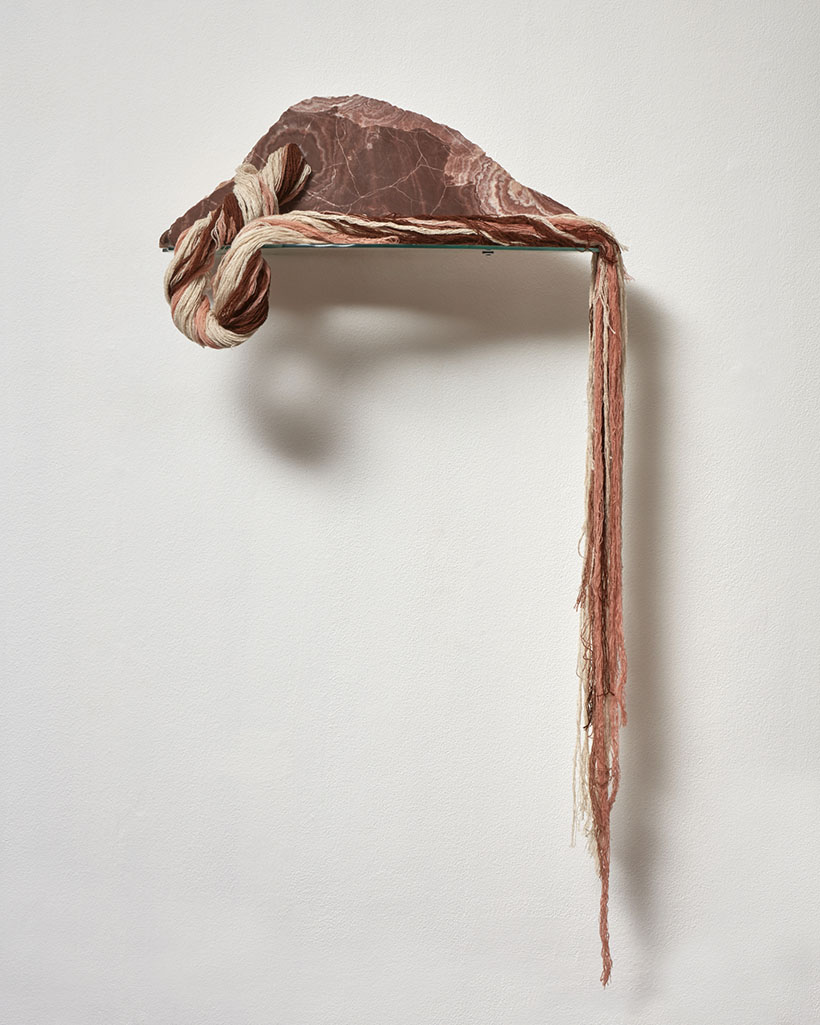
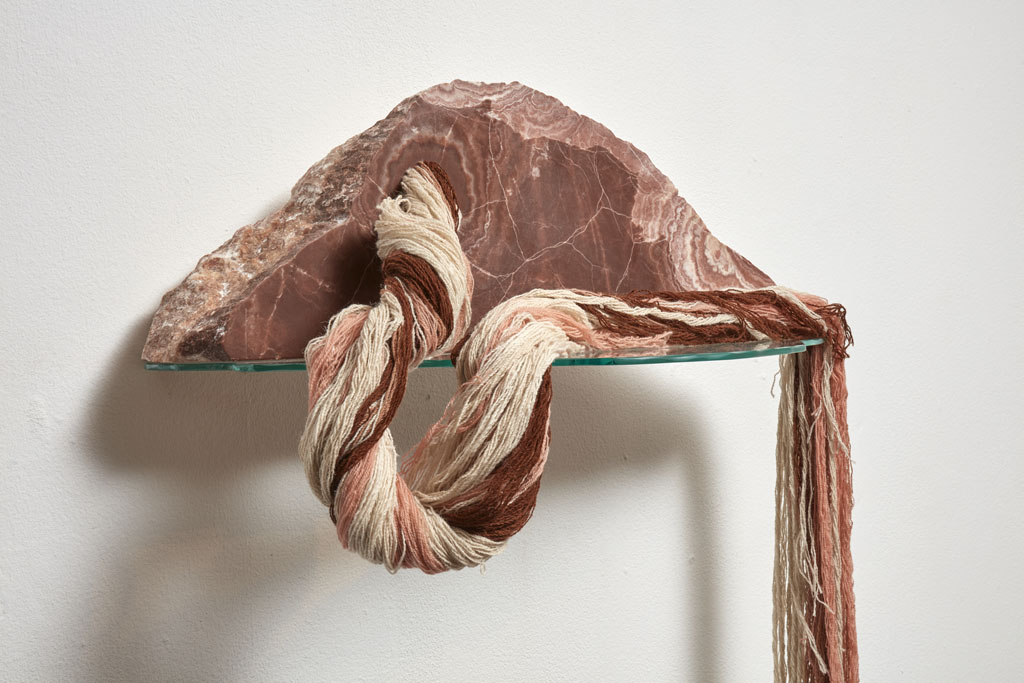
Escultura de Ónix de Huancayo, lana de oveja y alpaca teñida con tinte natural, y vidrio. Onyx from Huancayo, sheep wool and alpaca dyed with natural dye, and glass.
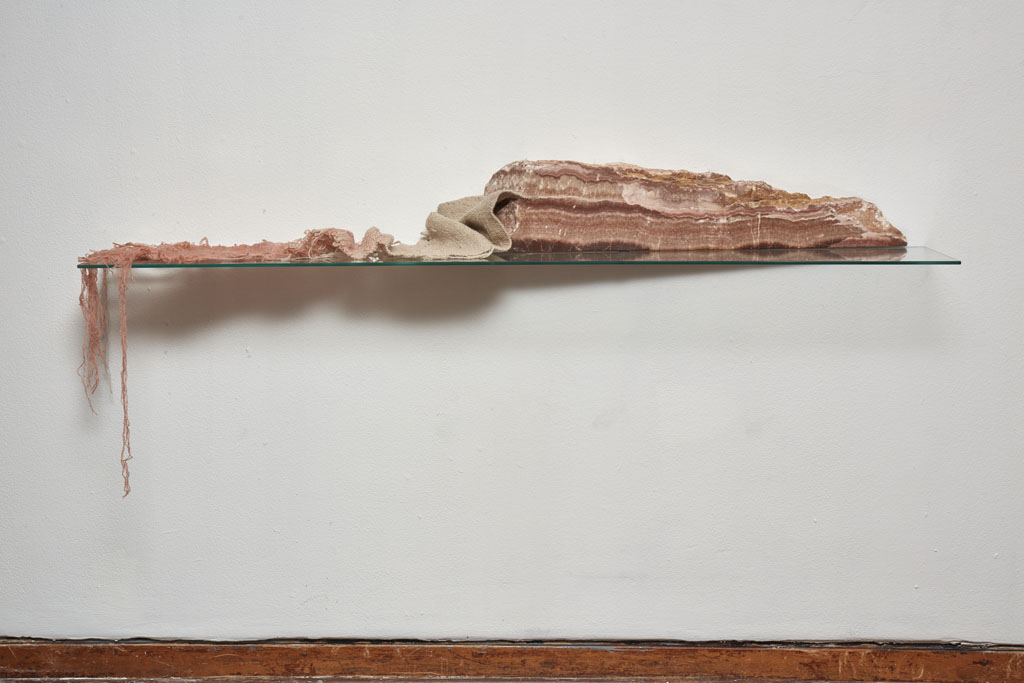
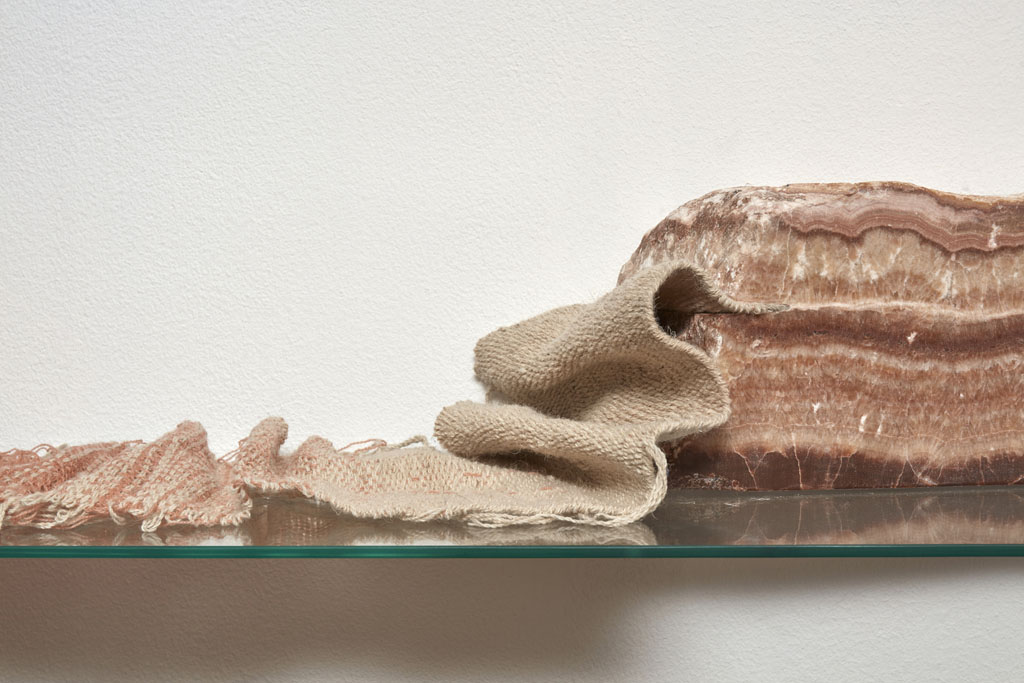

Ovillos de piedra. Stone clews.
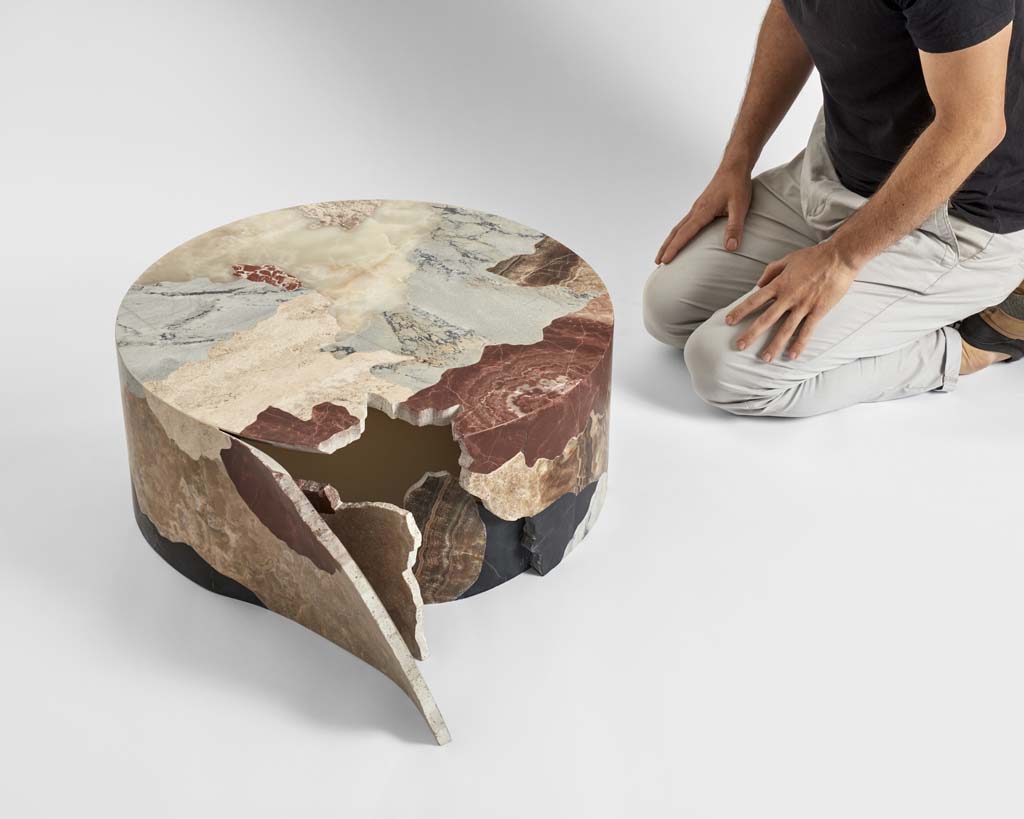
Geology of the diverse
“Geology of the diverse” stems from the search for local rocks and a wish to reconnect with the materiality of our territory through art.
In small fragments of local rocks – largely deemed waste by the industry – we find an opportunity to build a new geography and artisanally recreate the history of the territory we inhabit. By joining fragments of stones originating from different locations throughout the Andes, we reorganize a territory and time that we had somehow divided. The process speaks of the interaction between different altitudes and geographies, as well as the correspondence between the accelerated transformation of the habitat at the hands of man and the slow geological processes that have been ongoing for thousands of years and are visible on the Earth cortex. Rather than creating an object, the intention was to create the piece as a territory or place our bodies can relate to through its unpolished, open-ended, constantly transforming state.
The piece was a runner-up at the ICPNA Contemporary Art Awards 2019.
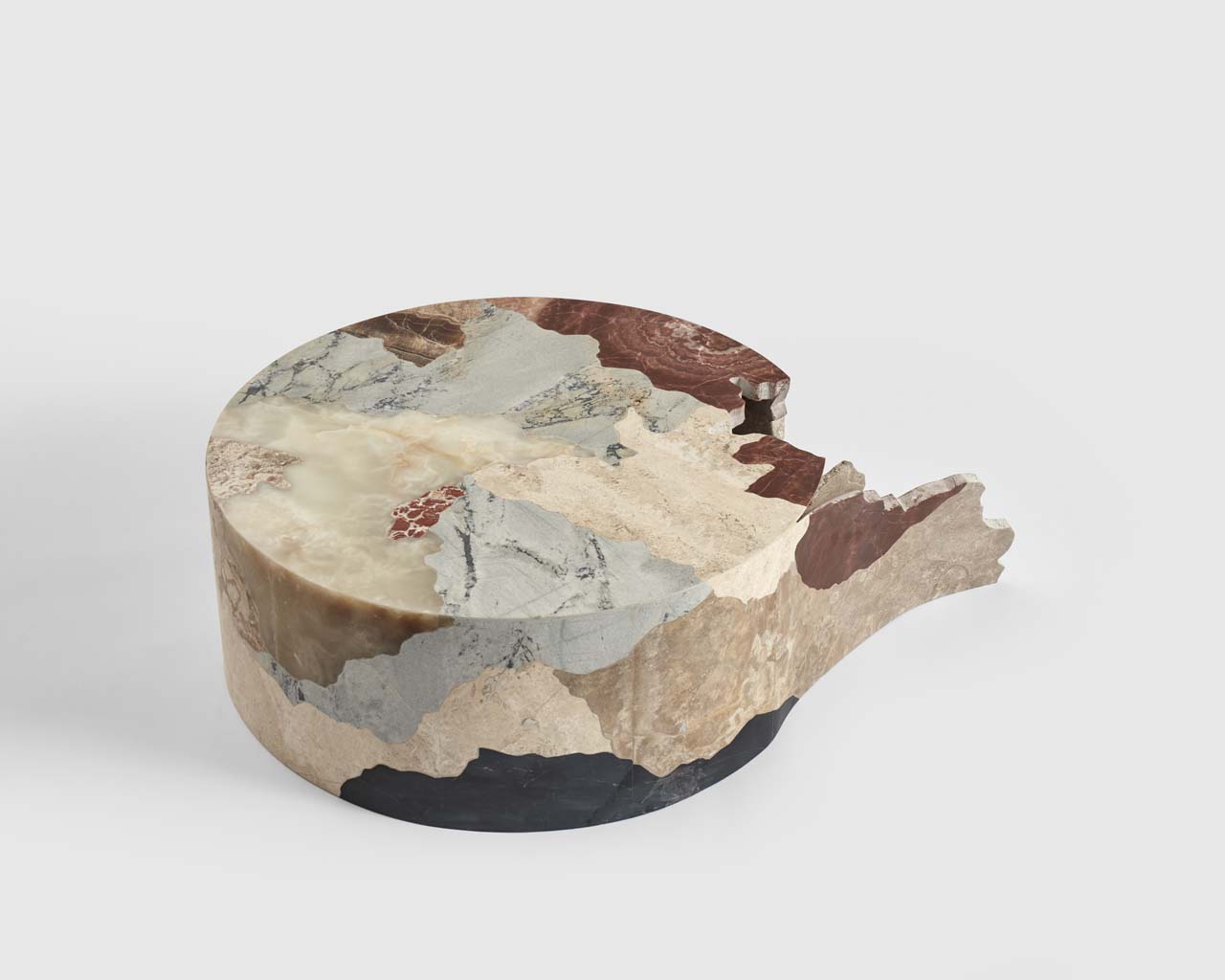
Escultura tallada a mano con distintas piedras del ande peruano. Handcarved sculpture with different rocks from Peruvian Andes.
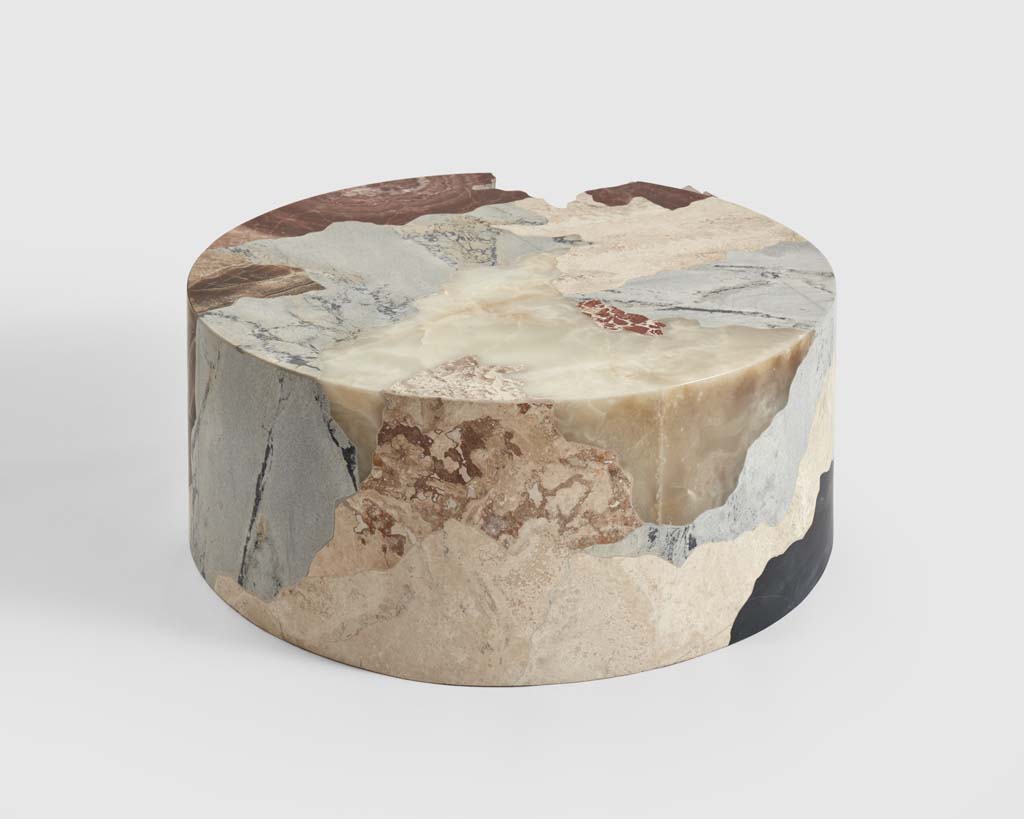
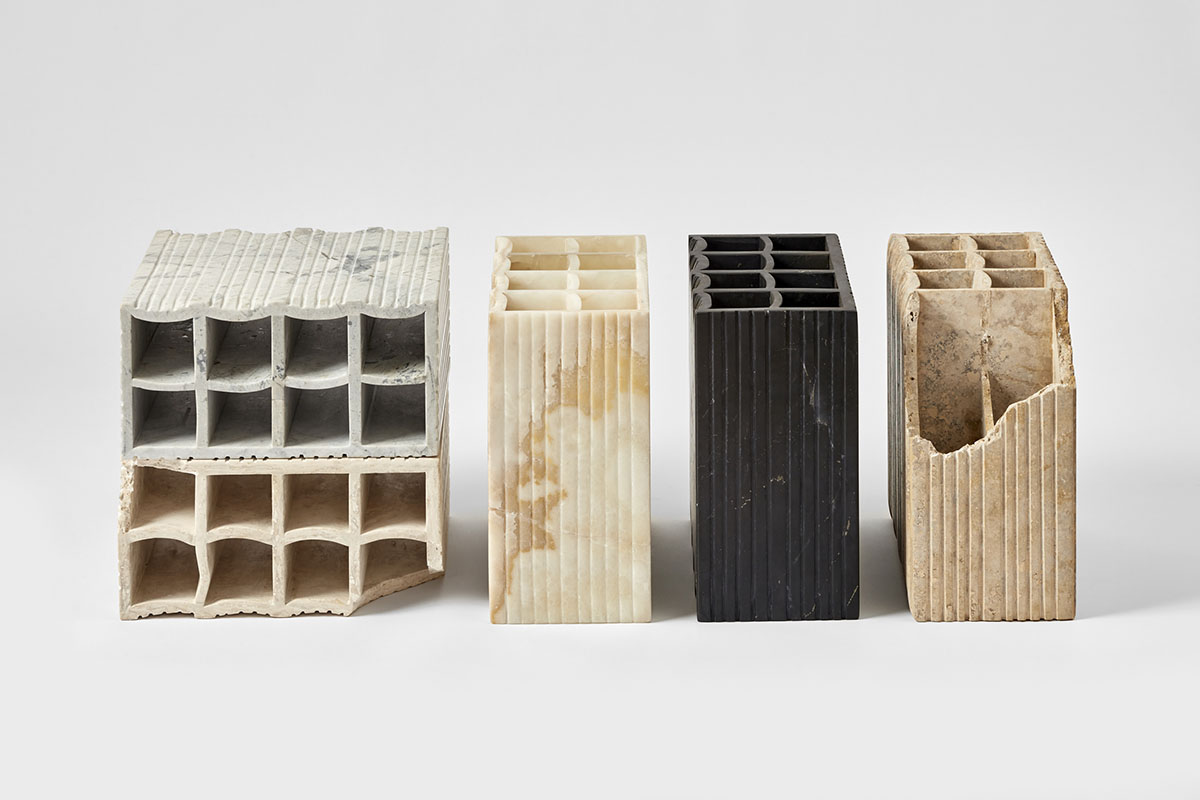
Ceiling bricks
The present worldview of our urban landscape and inhabited spaces is configured by the Western ideal of modernity that replaced artisanal construction systems and natural materials with industrial processes and new materials.
Bricks are the generic construction element that constitute this urban worldview. Moreover, in Perú, its image is linked to the country-to-city migration phenomena that began in the forties last century and brought about the construction of new collective spaces in Lima’s periphery, new urban centers in many regions outside the capital and new ways to self-build homes.
Ladrillos de piedra (Bricks of stone) approaches the concept of construction materials to pose the question: is there a continuity between the materiality of natural territory and the materiality of the urban space?
The pieces suggest a recovery of our relation to the territory’s density, along with its worldview and history. By acknowledging specific materials from places in the Peruvian Andes – such as Ayacucho, Junin and Ancash -, thes bricks establish a continuity between the material and its habitat, while simultaneously questioning the fragile balance between the natural processes that shape the landscape, visible in its constant transformation and sedimentation through time, and the relentless extraction, production and construction systems developed by humans.
Ladrillos de piedra confronts the basic construction element of industrial production and its artisanally crafted replicas with local stones to meditate on the way we construct our spaces within the context of accelerated urban growth that Peru has experienced since the last century.
The work disassembles and questions the value given to the specific, on one hand, and the generic, on the other. The work disrupts the homogenizing identity of brick as a construction module and points us to the unstable, changing and diverse character of the natural surrounding.
The materiality of the pieces harkens back to the lythic composition of our Andean territory and its manual traditions. Peru’s lytic tradition goes back to the pre-Columbian period, a time when it was common to develop technologies based on natural materials afforded by the territory. However, starting with the colonial era, these materials and relationships gradually declined into disuse.
Artisanal work in stone is also a way to spark a conversation about our history. The work alludes to lytic constructions and the symbollic reconstruction of a space, raising stone so that we can relate to the images of our fading architectural heritage.
Ladrillos de piedra was exhibited was during the Art Lima 2019 international art fair at Grau Galleria’s stand, a space dedicated to contemporary art located in Barranco district, Lima, Perú.
CONCEPT AND DESIGN
RAFAEL FREYRE
CRAFT WORK AND PRODUCTION OF PIECES
ROBERTO ROMÁN MUNAILLA
PHOTOGRAPHY
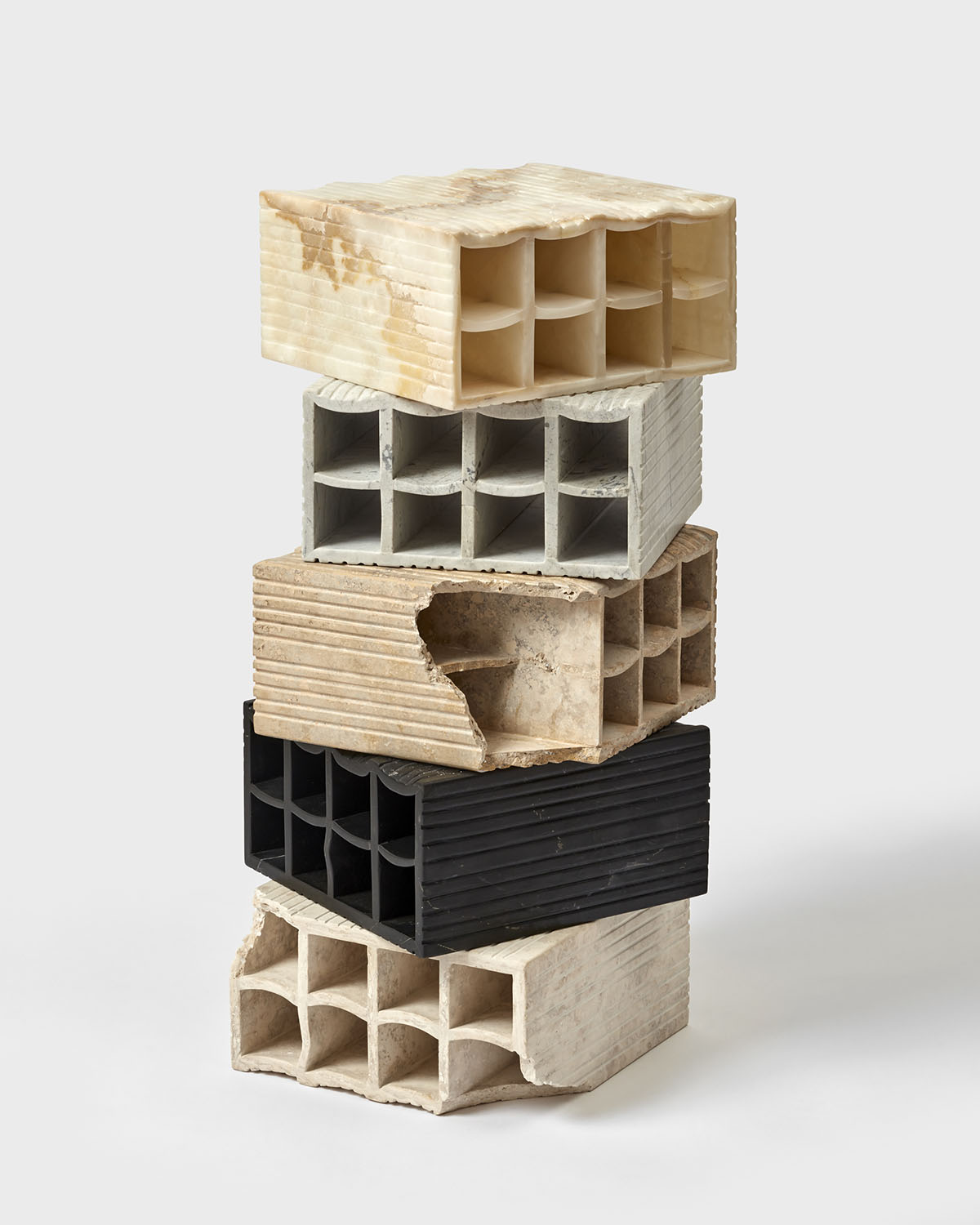
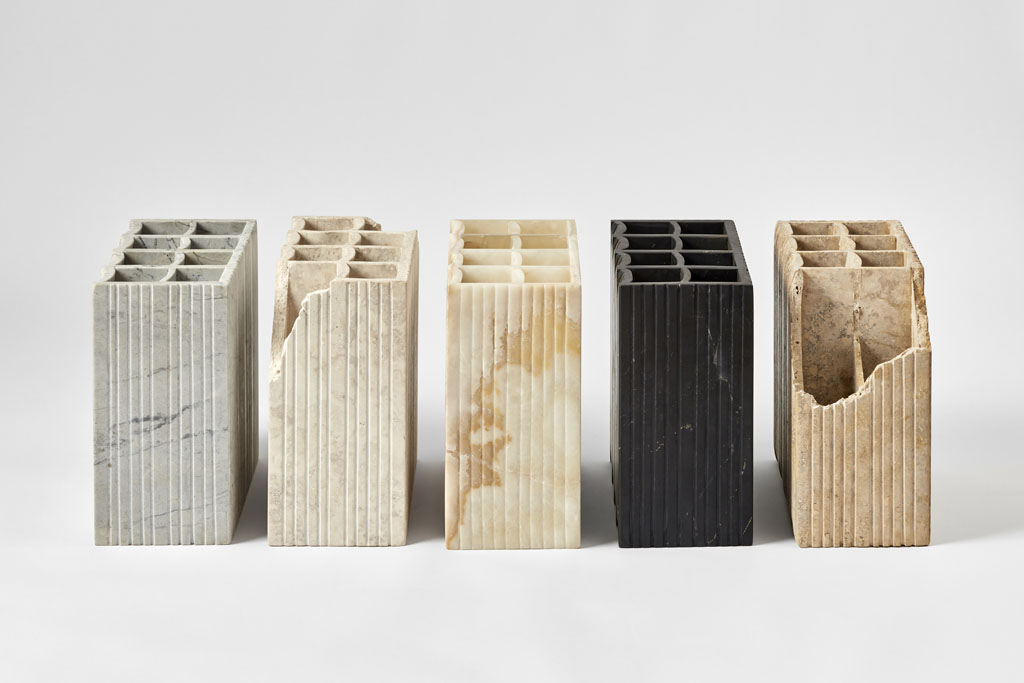
Diseño artesanal en piedra peruana: MÁRMOL GRIS DE FÁTIMA - ONYX DE AYACUCHO - TRAVERTINO ALBERTINO - MÁRMOL NEGRO DE FÁTIMA - TRAVERTINO CREMINO. Artisanal design carved in peruvian stone: GRAY MARBLE OF FÁTIMA - ONYX FROM AYACUCHO - TRAVERTINE ALBERTINO - BLACK MARBLE OF FÁTIMA - TRAVERTINE CREMINO
